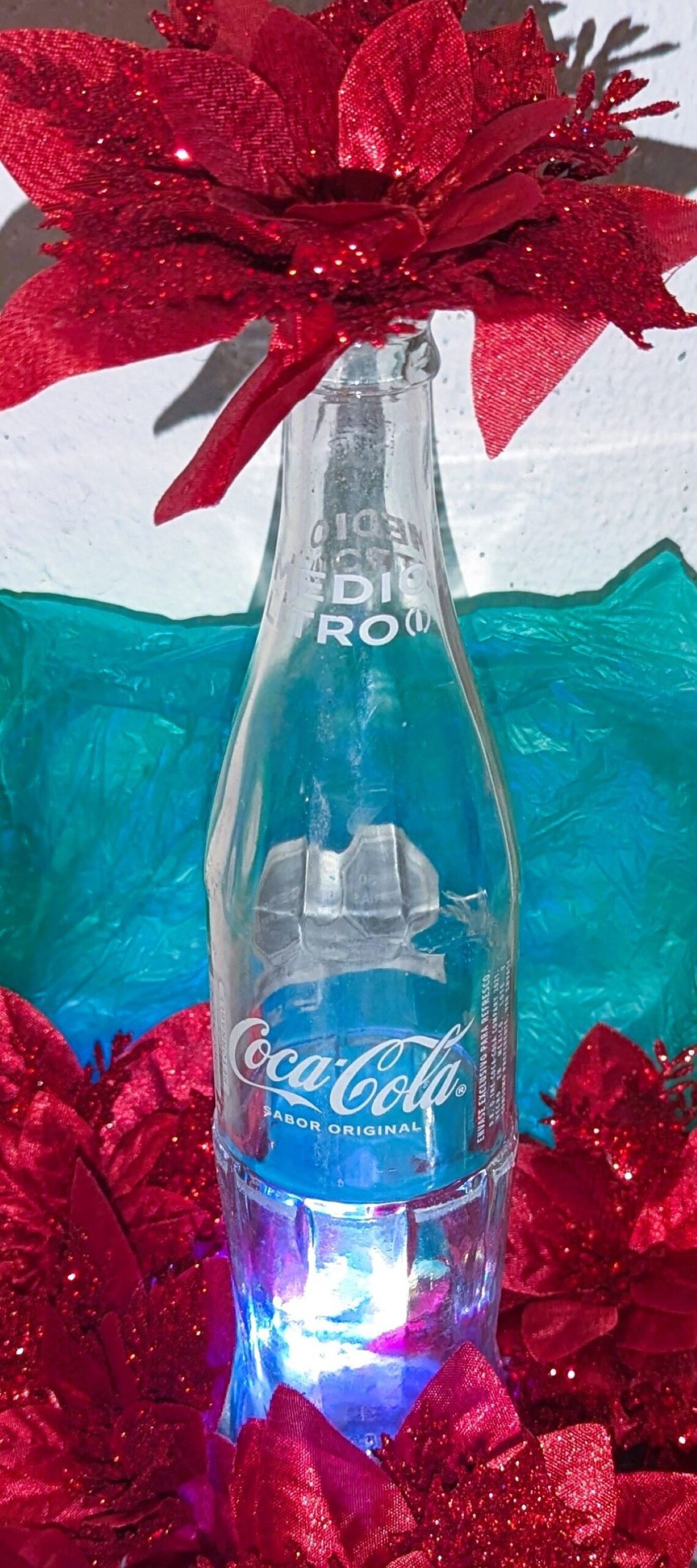A few weeks ago, President Claudia Sheinbaum assured the United States and Mexico that there were no caravans making their way through Mexico. But she was incorrect. There may not be a caravan of immigrants, but I learned from a pretty reliable source that there is a caravan coming. This caravan is much more insidious, and much more dangerous to Mexicans.
I’m talking about the Coca-Cola Christmas caravan, coming to 18 Mexican cities this month.

The caravan
The Coca-Cola company touts this PR extravaganza as a traditional tour of the brand. It’s a Christmas parade. Who doesn’t love a Christmas parade? Featuring beloved Christmas icons like Santa Claus (whose red coated image was created by Coca-Cola in 1931), as well as elves and polar bears and trains and people dressed as dancing bottles of Coke…all with the Coca-Cola logo emblazoned on them.
The history
Without knowing the history of Coca-Cola in Mexico, one could be forgiven for thinking this is just a benign ad campaign.
My Substack friend Mike Leavy wrote an excellent, eye-opening article that explains what Coca-Cola is doing to Mexicans. You absolutely should read it, and I’ll link to it at the bottom. Then you’ll see why I’m horrified by the idea of this caravan.
The main takeaways for me were:
-Coca-Cola FEMSA is the 800-pound gorilla in this story, with 56 bottling plants all over Latin America.
-Their parent company, FEMSA, is based in Monterrey and also owns OXXO, the most ubiquitous convenience store in Mexico.
-Since its initial public offering (IPO) in 1993, Coca-Cola FEMSA has worked hard to get Cokes and other sugary products into the hands of every Mexican. Today, almost every town you can think of has as least one OXXO. And anywhere the OXXO doesn’t reach, I guarantee you a big red Coca-Cola truck regularly shows up to deliver its products.
-As a result of this very focused marketing, Mexicans now drink more Coke per capita than Americans do (151 liters vs. 117 liters).
-In Chiapas, where one of the largest bottling plants is located, Coke is cheaper and more readily available than water. Chiapans were found to drink 821 liters per capita, which Leavy calculated for us as two and one half liters per person per day.
-Not surprisingly, there is now an obesity epidemic in Mexico, and 17% of Mexicans are diabetic. That’s almost one in five people.
– There are also environmental problems with the Coca-Cola bottling plants. The one in Chiapas consumes over one million liters of water per day in an area already plagued with water shortages. It takes an estimated 1.5 to 3 liters of water to make 1 liter of Coke.
The controversy
You might understand now, why people are trying to shut down the Coca-Cola plant in Chiapas. And why a watchdog group called El Poder del Consumidor (The Power of the Consumer) recently filed a complaint with the health department to try to stop the Coca-Cola Christmas caravan. The argument is that the company is violating a promise that they made to the World Health Organization in 2008 to stop marketing sugary drinks to children.
In a statement made by El Poder: “Coca-Cola’s Christmas caravans are a clear example of predatory advertising aimed at children and adolescents. These strategies use visual and emotional elements such as bright lights, festive music and iconic figures such as Santa Claus, designed to generate a strong emotional connection with children. By presenting themselves as a magical and harmless event, these caravans mask their main intention of promoting soft drink consumption, which contributes to health problems such as overweight, obesity, diabetes, and tooth decay, among others.” Yikes.
What can we do? Que hacemos?
The caravan is coming to Puerto Vallarta on December 13. If I were a Mexican citizen, I would definitely be part of the protest. Unfortunately, given my current legal status (residente temporal), I cannot actively participate in a protest without risking deportation.1 So, I have to find different ways to resist. I can write about it and raise awareness, so that’s what I’m doing now. I can also stop giving Coke and OXXO my money and buy locally instead.
In the long term, what I really want to do is help my adopted country to eat healthier. The OXXO diet is literally killing us. I know, I’ve been there. Before I moved to Mexico I was 50 pounds overweight, thanks to the convenience of fast food. I had to change a lot of bad habits, but I succeeded. I know better than to try and tell people what to eat, but maybe I can lead by example. I can share my favorite sugar-free recipes. I can make delicious sugar-free snacks and bring them to social gatherings. This Christmas, I want to make sugar-free strawberry jelly and give it away in little gift jars. It will take time and trust, and right now I’m still the new gringa in town. Who’s going to listen to me? But this is a matter of life or death. It is worth the effort, or as they say here, vale la pena. In the meantime, I’ll keep an eye on Puerto Vallarta to see if the caravan makes it to my side of paradise.
References
The first two articles are in Spanish, but that’s why God gave us Google Translate:
Announcement about the caravan:
https://expansion.mx/tendencias/2024/11/29/caravana-coca-cola-2024
The complaint to the health department:
Mike Leavy’s research of Coca-Cola in Mexico:
- Yes, it is true that foreigners cannot participate in political protests in Mexico. Here’s a note from the U.S. Embassy: https://mx.usembassy.gov/security-alert-demonstration-in-mexico-city/

